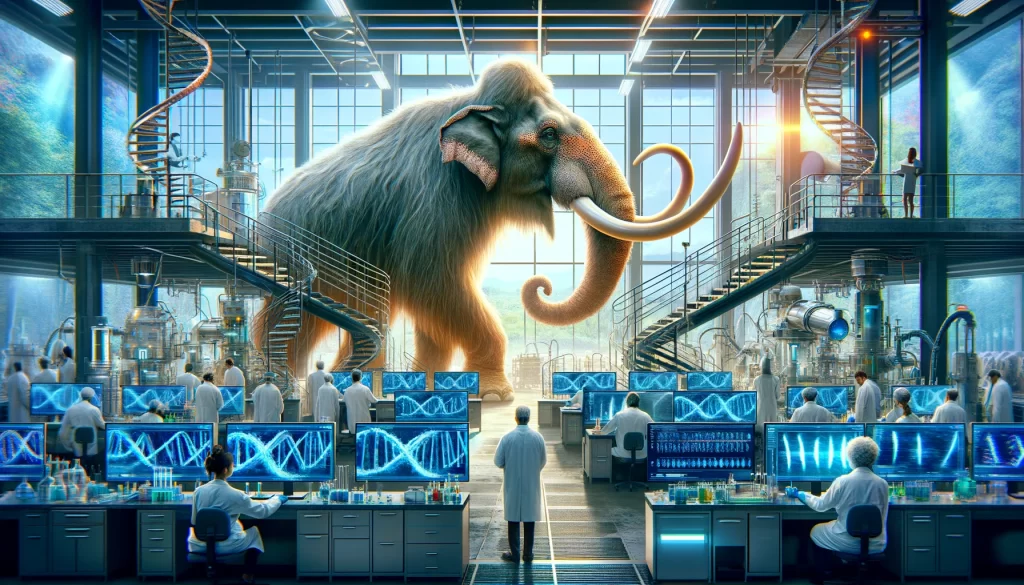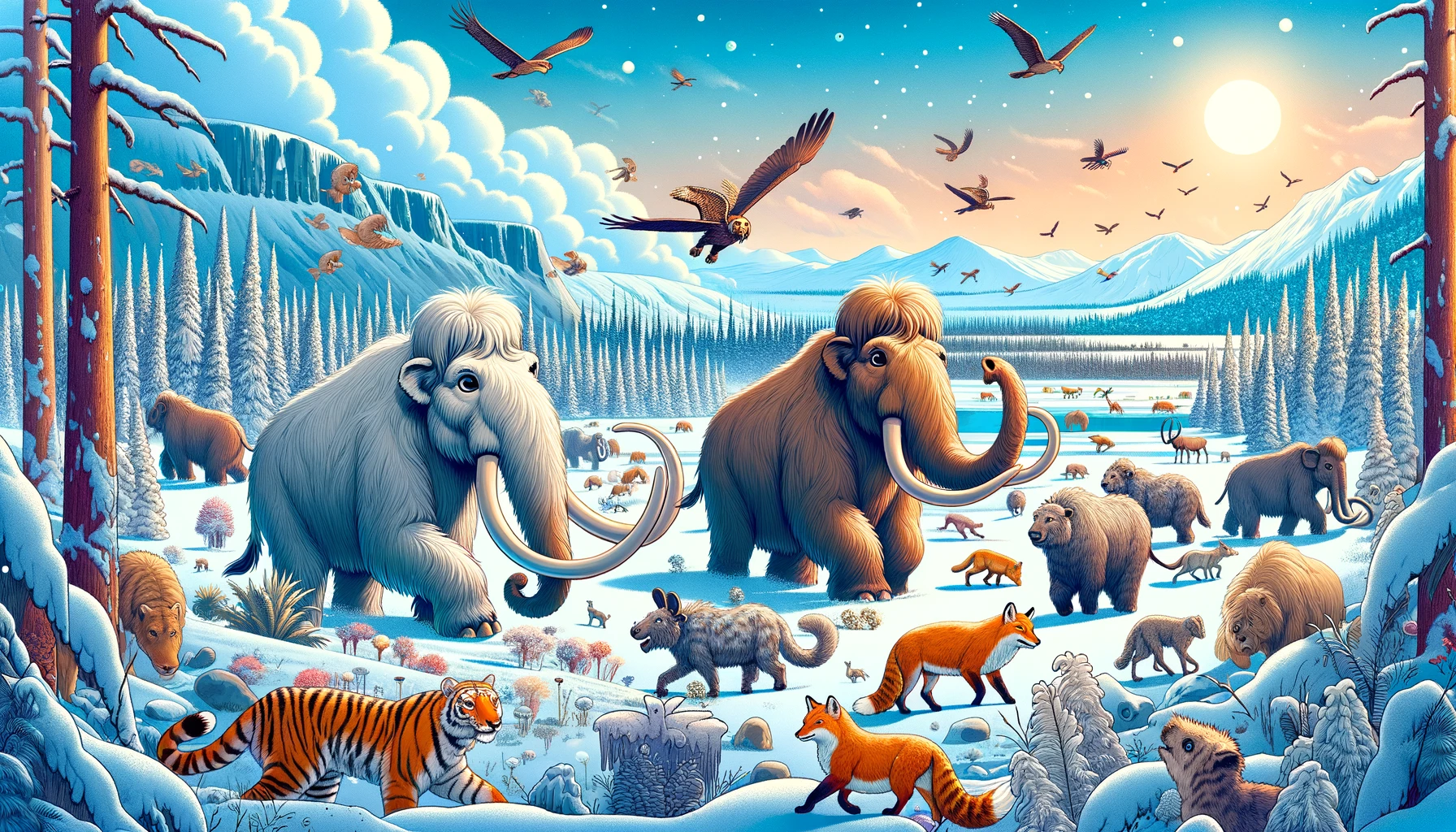In the world of science and technology, there’s an ambitious company called Colossal Biosciences with a goal that might sound like it’s straight out of a science fiction movie: they want to bring back the woolly mammoth. Well, sort of. What they’re actually trying to do is edit the genes of the Asian elephant to make it look and survive like its ancient cousin, the woolly mammoth, which lived in freezing climates thousands of years ago.
This task is far from simple. The scientists at Colossal face a slew of challenges, such as figuring out the exact genetic changes needed, creating baby mammoths from edited cells, and finding a place where these new creatures could live. Despite the long and uncertain journey ahead, the team recently celebrated a breakthrough that might make their ambitious goal a little more attainable.
The team has successfully turned Asian elephant cells into a special kind called induced pluripotent stem cells (iPSCs). These cells are like super cells because they have the potential to turn into any other type of cell in the body. This is a big deal because it means scientists could use these cells to create elephant sperm and eggs in a lab, allowing them to test genetic edits without needing to bother living elephants.
Asian elephants are endangered, with only about 30,000 to 50,000 left in the wild, making their sperm and eggs extremely rare and valuable for conservation. Colossal’s work could, therefore, help not only with their de-extinction goals but also with conserving existing elephant populations.

The process to create these iPSCs wasn’t easy or quick, taking two months compared to the much shorter time needed for other species. This could be due to elephants’ unique biology, including their surprisingly low rates of cancer. Scientists think this might be because of multiple copies of a gene called P53 in elephants, which helps prevent cancer but might also make it harder to create iPSCs.
Colossal’s team hopes to use these iPSCs to eventually create sperm and egg cells, helping to increase genetic diversity and avoid the risks of inbreeding. These cells could also be valuable for conservation efforts, such as studying a virus that’s deadly to young Asian elephants.
While some experts believe Colossal will eventually overcome the technical hurdles to create a mammoth-like elephant, there’s debate about whether reintroducing these creatures into the wild is a good idea. The plan is to have them live in the Arctic, playing a role similar to that of the mammoths thousands of years ago, like helping slow down the melting of permafrost. However, it’s uncertain whether this is feasible or beneficial from a conservation perspective.
Despite these debates and challenges, the creation of elephant iPSCs is seen as a significant step forward. But there’s still a long road ahead, including mastering genetic edits and navigating the long gestation period of Asian elephants. If successful, this project could have a profound impact on conservation, scientific research, and our understanding of ancient ecosystems.
This article is based on the following article:
https://www.wired.com/story/colossal-biosciences-mammoth/

Background Information
By familiarizing themselves with these concepts, readers will have a solid foundation to understand the complexities and implications of efforts to bring back extinct species like the woolly mammoth. This knowledge not only aids in comprehending the specific project undertaken by Colossal Biosciences but also provides insight into broader scientific, ethical, and environmental discussions.
1. Genetic Editing and CRISPR-Cas9
- Genetic Editing is a technique allowing scientists to add, remove, or alter genetic material in an organism’s DNA. This can lead to changes in physical traits or behaviors of the organism.
- CRISPR-Cas9 is a tool that scientists use for editing genes. It acts like molecular scissors, cutting the DNA at specific points, which can then be modified to change the organism’s traits. This technology is crucial for projects aiming to bring back extinct species or modify living ones to resemble their ancient counterparts.
2. Induced Pluripotent Stem Cells (iPSCs)
- Stem Cells are special cells capable of turning into any other type of cell in the body. They can become skin cells, heart cells, brain cells, etc.
- Induced Pluripotent Stem Cells (iPSCs) are created in a lab by reprogramming adult cells to revert to an embryonic-like pluripotent state. This means they can develop into any type of cell in the body, offering immense possibilities for regenerative medicine, research, and projects like de-extinction.
3. De-extinction and Conservation
- De-extinction refers to the process of reviving extinct species through genetic engineering and other scientific methods. It’s a highly debated field that involves ethical, ecological, and technical challenges.
- Conservation focuses on protecting endangered species and habitats. It’s important to differentiate between conservation efforts, which aim to save living species from extinction, and de-extinction projects, which attempt to bring back species that have already disappeared.
4. Biodiversity and Ecosystems
- Biodiversity refers to the variety of life on Earth, encompassing different species of plants, animals, fungi, and microorganisms. High biodiversity often indicates a healthy ecosystem.
- Ecosystems are communities of living organisms and their physical environments interacting as a system. They provide essential services like clean water, air, and soil fertility. Understanding how extinct species like the woolly mammoth interacted with their ecosystems can shed light on the potential impacts of their reintroduction.
5. Ethical Considerations
- When undertaking projects like de-extinction, scientists and society must consider ethical questions, such as the welfare of genetically modified organisms, the impact on current ecosystems, and the prioritization of resources between bringing back extinct species and conserving existing ones.
6. Climate Change and Its Impacts
- Understanding the basic concepts of climate change is crucial, as it affects biodiversity, ecosystems, and the feasibility of reintroducing species into their former habitats. Climate change can alter the conditions of habitats, making it challenging for reintroduced species to survive.
Please subscribe to Insight Fortnight, our biweekly newsletter!
